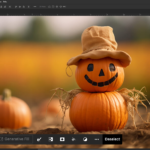“Java for Beginners: Building Your First Android App”
Kickstart Your Coding Journey: Build Your First Android App with Java
What is Java and Why Use It for Android?
Exploring the World of Java: Types of Applications You Can Build
1. Web Applications:
Java is widely used in web applications, which are ubiquitous in today’s digital world. Java enables developers to create scalable, secure, and reliable online applications with frameworks like Spring. Consider your preferred e-commerce website or your preferred social media outlet. Java is frequently used on the server side of these websites in order to effectively process user requests and manage data. Developers can generate dynamic content that engages consumers by combining HTML and Java code with tools like Servlets and JavaServer Pages (JSP).
3. Desktop Applications:
4. Enterprise Applications:
Many firms rely on enterprise apps as their foundation. Everything is taken care of by them, including inventory management and customer interactions. The purpose of Java Enterprise Edition (Java EE) is to construct large-scale applications that have strong security and performance requirements. Backend systems that manage transactions, communicate with databases, and guarantee data integrity are frequently a part of these applications. Because of its dependability, Java is a top choice for businesses wishing to create robust, scalable systems.
Although embedded systems are not typically associated with Java, the language does play a part in these scenarios. Java is used to create embedded system applications, such as those for smart appliances and medical equipment. Java fulfills the requirements of these applications for dependability and efficiency. The Java ME (Micro Edition) platform makes it simpler to include a bit of smart technology into commonplace objects by enabling developers to create programs that can operate on devices with limited resources.
6. Gaming Applications:
Java continues to be popular in the gaming industry, despite the dominance of languages like C++ and C#, particularly in online and mobile gaming. Java is typically used to create cross-platform games that are accessible to users on a variety of devices. Well-known titles like Minecraft have demonstrated Java’s ability to produce incredibly immersive gaming environments. The aspect of portability keeps players linked and enables developers to reach a larger audience.
Setting Up Your Development Environment
You must arrange your workplace before you begin coding. Consider it as setting up your first studio as an artist before you paint your first masterpiece.
Download Android Studio:
This will be your primary tool. It resembles a paintbrush and canvas together. Visit the Android Studio website, get the software, then set it up on your PC.- Install Java Development Kit (JDK): Java programming is built on top of this. It is available on Oracle’s website. You may be confident that your computer can comprehend and execute Java code by installing JDK.
- Set Up Your First Project: Get Android Studio open, then select “Start a new Android Studio project.” To keep things easy, select “Empty Activity”. Give your app a name and decide where to save it.
It is crucial to understand the basic components when developing an application. Consider it as building a house’s foundation: a sturdy foundation allows the entire structure to stand tall.
- Activities: These resemble your app’s screens. Much as a house’s rooms display diverse content, so too do screens.
- Layouts: This refers to the configuration of the components on your screen. XML is a basic markup language that allows you to position text, images, and buttons.
- Intents: Messages known as intents enable communication between various components of your application. It’s similar to delivering updates to all of your pals via note.
Writing Your First Lines of Code
Create a Simple Button:
Open the activity_main.xml file and write the following code to add a button to your app:
<Button
android:id=”@+id/myButton”
android:layout_width=”wrap_content”
android:layout_height=”wrap_content”
android:text=”Click Me!” />
- Add Functionality to the Button: Now, open mainactivity.java and add this code. It tells the button what to do when it’s clicked:
Button myButton = findViewById(R.id.myButton);
myButton.setOnClickListener(new View.OnClickListener() {
@Override
public void onClick(View v) {
// Action to perform when the button is clicked
Toast.makeText(getApplicationContext(), “Hello, World!”, Toast.LENGTH_SHORT).show();
}
});
When you click the button, a message will pop up, saying “Hello, World!” It’s a small step, but it’s your first encounter with interactive coding!
Testing Your App
It’s time to test your creation before releasing it to the public. Testing is similar to the pre-show dress rehearsal. You desire for things to run well!
- Run the App: click Android Studio’s green play button. This will start your app on your linked device or in the emulator.
- Check for Bugs: Click the button, if you can. Does the message appear? If so, you’re headed in the correct direction. If not, review your code again to be sure there are no errors.
Conclusion:
Best wishes! You’ve ventured into the realm of Android app development using Java for the first time. You now know how to write code, configure your environment, and test your application. Consider this to be the beginning of an amazing journey. Continue learning, exploring, and coding. Who knows? You might be the one to create the next popular app!



